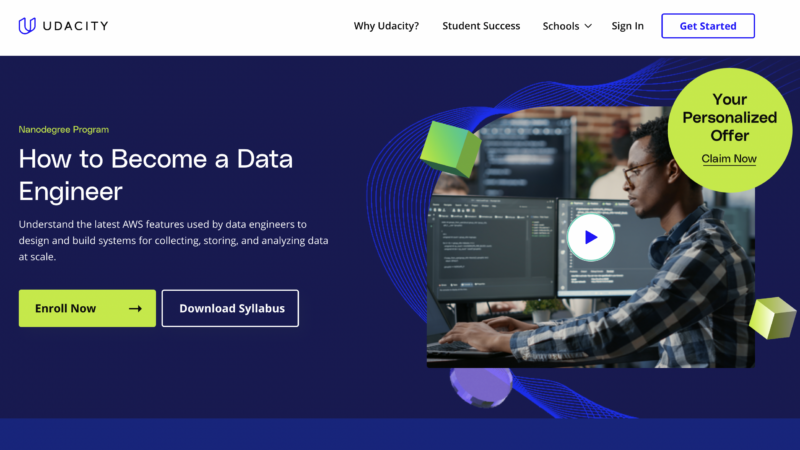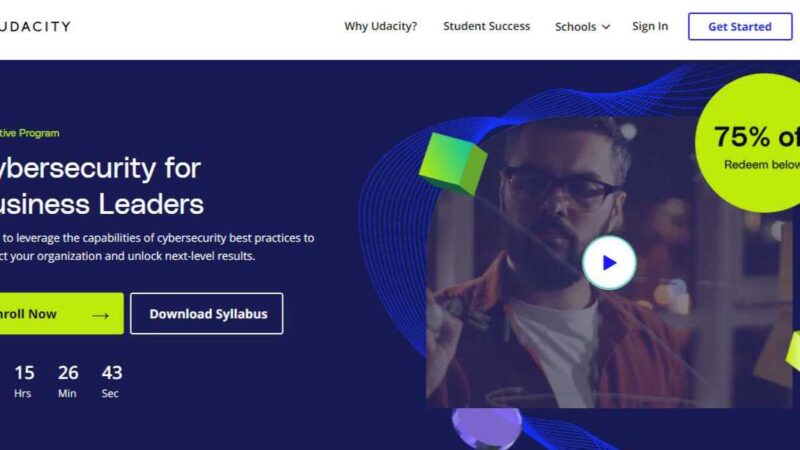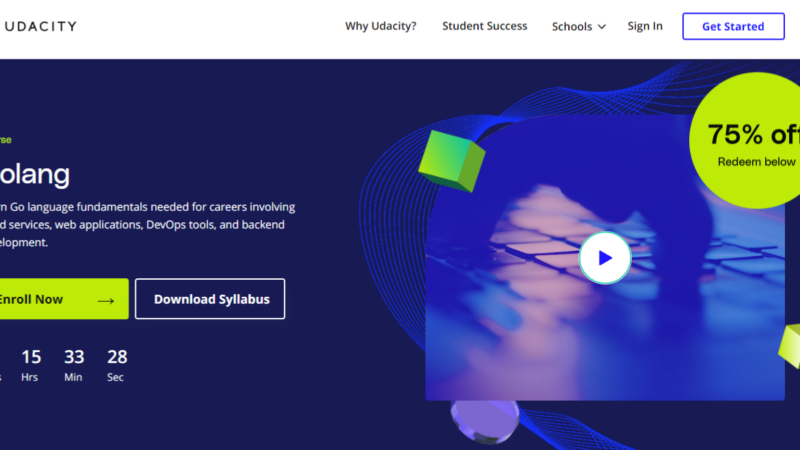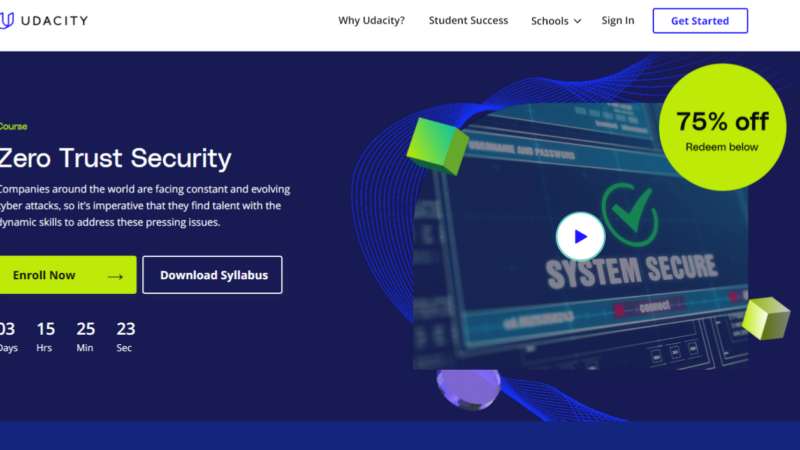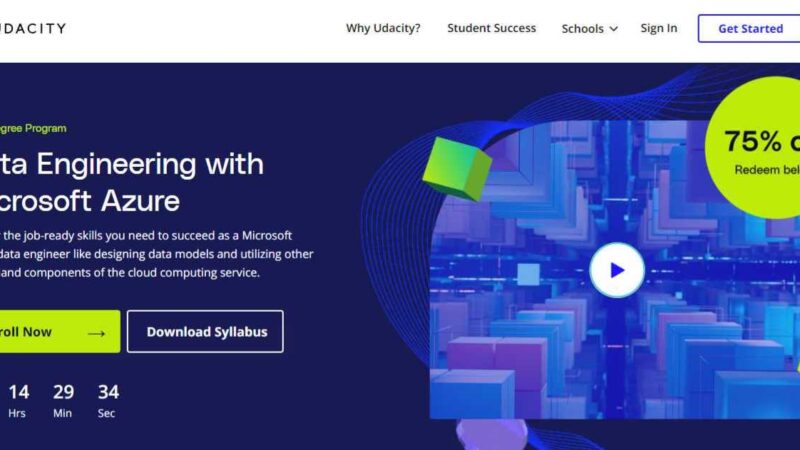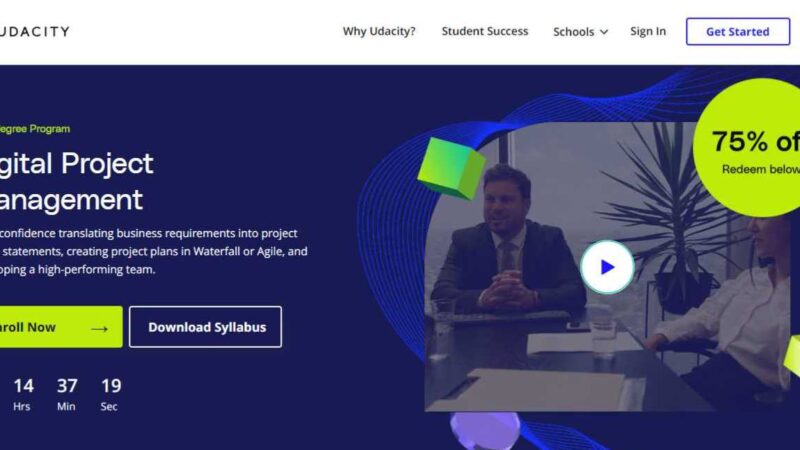Udacity Data Product Manager Nanodegree Review

As businesses make the switch to more online-focused business, they rely heavily on data. This data includes anything from customer behavior online to products receiving the most attention and the ads that get the most clicks. Companies can make use of this data but, only when presented in a readable manner. That is where the demand for Product Managers came into play, creating a need for someone that could organize and enhance data while managing a team of analysts to meet company goals.
Pick Up the Skills
Product managers work with engineers, analysts, and other teams to make the most out of a company’s collected data. They must have a deep understanding of analysis and statistical methods. On top of that, they need to understand how to enhance data structures using KPIs and other machine learning techniques. The Data Product Manager Nanodegree from Udacity comes with a curriculum tailored to those wanting to break into the field but, is it worth it? In this Udacity course review, we’ll take a look at the course, dissecting the curriculum, cost, and duration to help you decide if Udacity is the academy for you.
About Udacity
Before we get to specifics, we’d first like to introduce you to Udacity. Udacity is an online academy that is geared toward those looking to break into the world of IT. From the most basic concepts to highly advanced topics, the academy has video lectures and certificate programs for all sorts of levels. Some of the lectures and introductory programs are free and others cost. Those that come with a cost come with a certificate and a few other perks, known as a nanodegree.
What is a Udacity Nanodegree?
Nanodegrees are short certificate programs designed to go in-depth on a specific topic. Some of them were designed in collaboration with top companies in the industry, including Mercedes-Benz, Uber, and Microsoft. The curriculum is carefully selected and designed in a way that addresses all the most important skills needed for a position in the field. Each section ends with a project, one which applies the new knowledge learned and solved a real-world issue that Product Managers in the industry face. Each nanodegree comes with:
- Your very own mentor
- A learner’s community to make connections and collaborate
- The freedom to learn at your own pace
- Hands-on projects that mimic real industry problems
- Career prep and mock interviews
Meet your Instructors
Apart from the awesome perks that come included with each nanodegree, each course and lesson is led by some amazing instructors. Udacity really goes out of their way when choosing instructors, selecting those with both a passion for teaching and industry experience. Before we breakdown the course, let’s meet the instructors for the Data Product Manager Nanodegree.
JJ Miclat
JJ is a genius when it comes to making difficult things simple. He has a way of looking at things and deconstructing them, breaking them down into individual, short-term tasks. His experience comes from his years in the industry, where he’s worked with huge and hip corporations including Beats Music, Apple, VSCO, and more. He’ll share some of his own techniques with you, all of which you can take with you and apply within your projects.
Vaishali Agarwal
Vaishali has more than 12 years of experience working with data. She has done everything when it comes to data from the analysis, management, development, and design. Because she’s worked with data on so many angles, she’s able to help learners of all types get a well-rounded look at what they can expect from their first day on the job and beyond. She shares a lot about her experience, working with industry giants like Expedia.
Anne Rynears
Anne has been in the game for more than 6 years working with everything from software to research agencies. She presents learners with a focus on the growth of specific products, showing how collected data can help. She’s led teams through highly successful campaigns, where she was able to grow production and increase efficiency to take a business to another level.
Course Breakdown
Prerequisites
Udacity recommends that learners have experience with a few things before starting the course. Don’t worry, they are not asking that you know specifics about data modeling or engineering. Then suggest that you brush up the terminology, familiarizing yourself with the terms, and some of the techniques used. We agree with this recommendation and could note the difference when we are introduced to topics. We had at least seen the terms before and had a very basic idea of what they meant to data.
Module One: Applying Data Science to Product Management
The course starts with a look at the connection between data science and product management. This part of the course is more theory-based at the beginning, helping you get a better idea of how you’ll be able to apply the skills in the second half. You’ll also look at the roles of others that work with data like engineers and analysts, seeing how all teams come together to create successful campaigns. You can get your first hands-on experience with learning how to visualize and statistically analyze data sets. You’ll work with Tableau and other tools to deepen your understanding of data, using it to help you plan and execute your strategy.
Project One: Product Proposal
One of the most important tasks of a Product Manager is searching for opportunities based on collected data. That is exactly what you’ll get to do in your first project, ultimately creating a proposal to create the world’s first flying cab service, Flyber. You’ll analyze collected data, take a look at trends, and create a data-driven proposal to present to a team of advisors. Your goal is to create an amazing user experience while creating a profitable business for your company.
Module Two: Work with Data Infrastructures
As a Product Manager, you will need to have a deep understanding of the infrastructures and data pipelines. This is the process where data is collected, processed, and analyzed to make ideas possible. The collection of data is just one small piece of the puzzle, with the analysis being the most important part. From here, you will see how analysis helps in creating step-by-step plans and solutions to issues companies are facing.
Project Two: Build a Data Strategy
Using the creation from the first project, you’ll take a look at analyzing data after the first launch. Most of the time, after products are released, data collection and analysis increases, to help companies get a look at performance in the market. To give your shareholders a better idea, you will design a data model that will present them with all the information they need to know to track the product’s success. You’ll take a look at the growth and choose your own ways to present, transforming the collected data into useful information.
Module Three: Leveraging Data in Iterative Product Design
Throughout the production lifecycle, data collection is continuous and provides a look at how it is performing. In this section, you’ll get a look at how the designed pipeline help in the collection of data throughout the product lifecycle. In this part, you’ll learn how to apply statistical methods to give you a better grasp of the future of your design and show how it will most likely perform. A huge asset to companies is foresight into business, helping them to decide where to budget their money and what their next move should be.
Project Three: Create an Iterative Design Path
Keeping your designs and ideas from the first two projects, you’ll create a design path for Flyber. This includes creating a way to take a look at potential risks or issues that the company could face, using the help of A/B tests. All of this will help you in your design, as you create the most effective strategy and the path to present to your colleagues and shareholder. By the end, you will have done, from start to finish, all of the tasks that Product Managers do in a day’s work.
How Long Does the Course Take?
We know you’re probably thinking this course may take a long time. It seems like a lot to get through but, the modules are easy to follow and the projects are fun. Udacity estimates that the course will take three months to complete if you’re spending 10 hours a week. 10 hours a week is not very much time throughout the whole week and, if you dedicate a little more (15-20 hours) you can finish in two months with no problem. You might be motivated to finish faster for a few reasons, one of them being the course cost.
How Much Does the Course Cost?
Udacity has a few ways that you can pay for the course. You can pay per month or pay in full. The time you take effects the cost, adding up each month that you have access to the course. Which way should you choose? Let’s take a deeper look at each one.
Pay as you go
When you pay as you go, you’re charged per month of access. Each month cost $359, and, as you can probably guess, can add up fast. While this is a great option that allows you to take all the time you need, it doesn’t do much in an economic sense, diving up the cost dramatically. This deal is best if you can finish in less than the estimated time.
Pay in Full
If you take Udacity’s option to pay upfront, you get three months (the estimated time) to complete the course. On top of that, you get to enjoy a 15% discount added by Udacity for making a one-time payment. This makes the course cost 927. This is a good option if you’re not able to dedicate more time or feel you may not be able to complete the course in less than three months.
What Other Learner’s Say
This course hasn’t been around very long and is already making a big splash among those interested in a career as a Data Product Manager. It was launched earlier this year and has collected a few reviews over its short run. The course has an overall rating of 4.5 stars out of 5, some of which we’ve included below.
“The Data Product Manager Nanodegree program is ideal for product managers and students who want to learn more about applying data science to product development.” – Gina C.
“Hone specialized skills in Data Product Management by learning how to apply data science best practices to build data-driven products backed by scalable data strategies to deliver the right experience to the right users, at the right time.” – Andrew A.
From 2017 to 2019, the demand for Data Product Managers increased by 32%. The jump in demand is directly related to the increase in tech-related jobs, most of which deal with large loads of big data. As more companies turn to the analysis of their data, they need someone that can help teams work together in making profitable predictions for the future of business. Someone with the knowledge of how data analysis works that can provide insight into how products and projects will play out is a huge asset to companies.
Final Thoughts
In our experience, the course provides a good glimpse into what Data Product Managers actually do. Through lectures, tutorials, and hands-on projects, you’ll get a good set of skills and tests that you know how to use them before you step foot in the field. More importantly, the job market is in demand and growing, so much that it is ranked as one of the hottest careers in tech today. If you’re ready for a career change or are looking to take your skills to the next level, a nanodegree program like Udacity’s Data Product Manager course is a good place to start, learning the ropes and gaining a confident edge above the competition.
